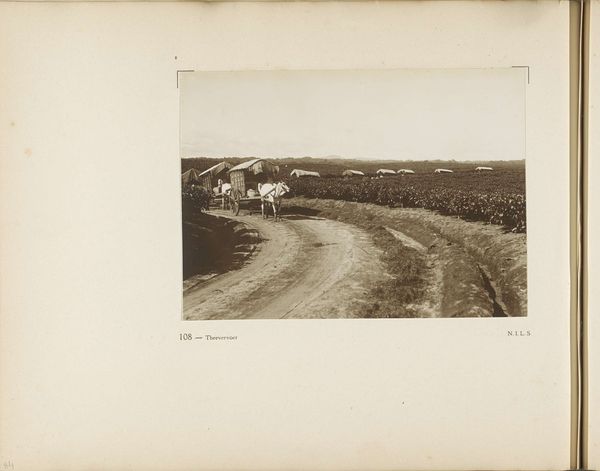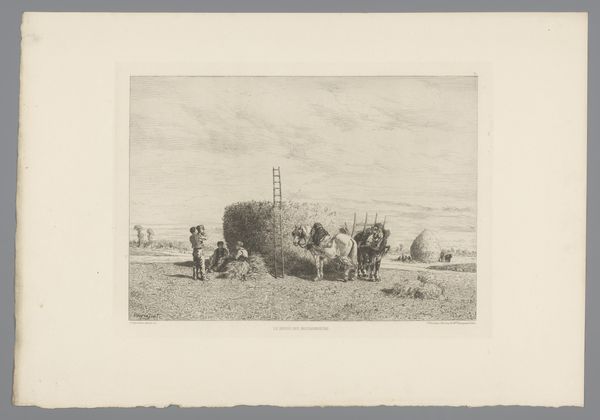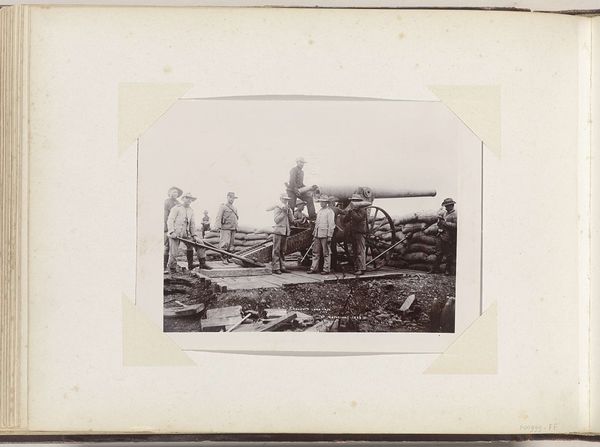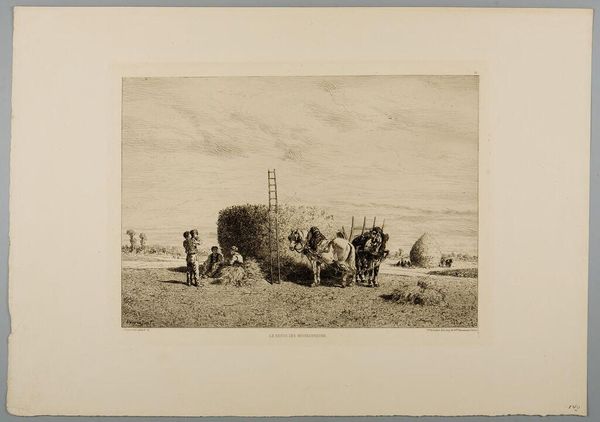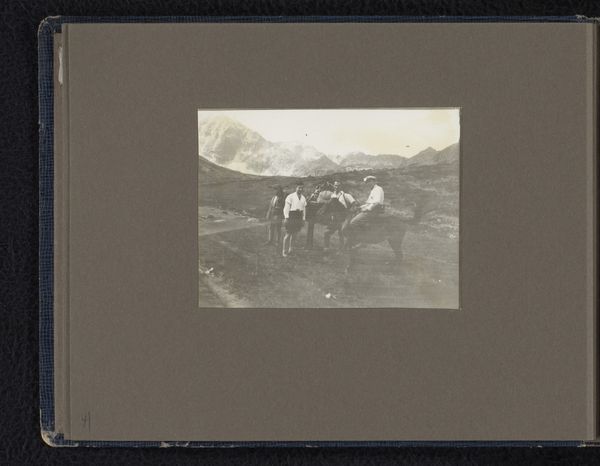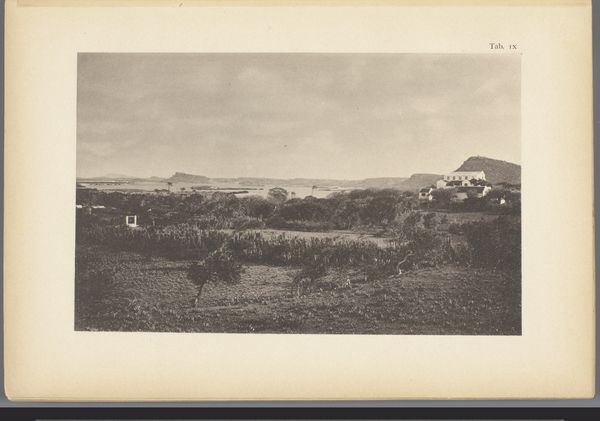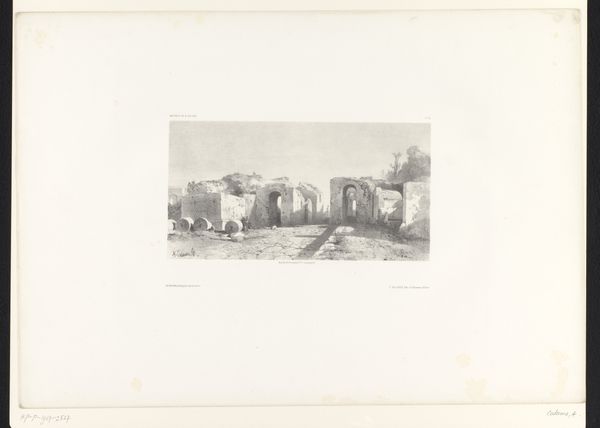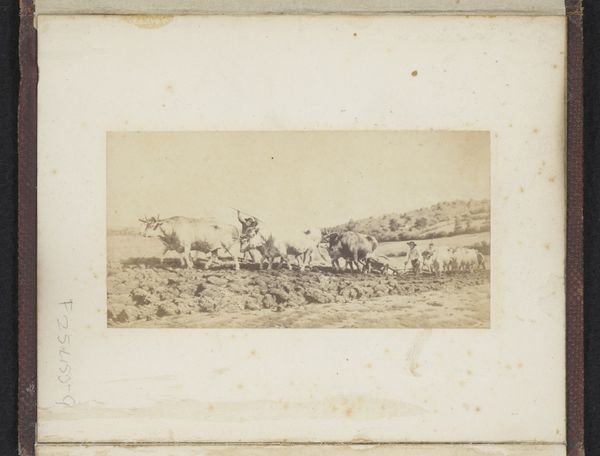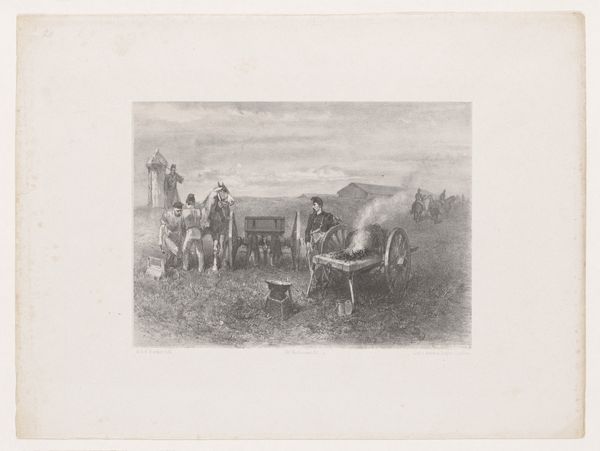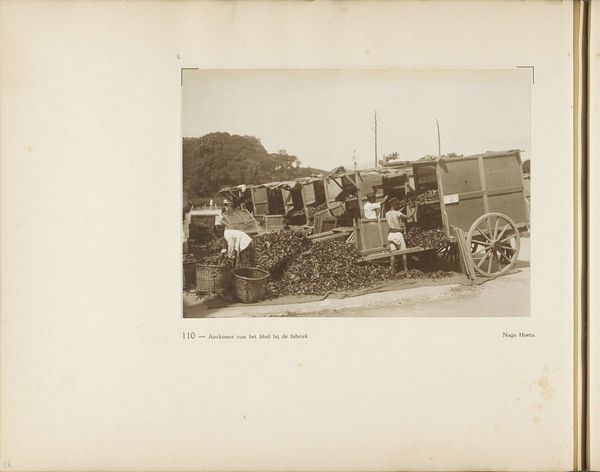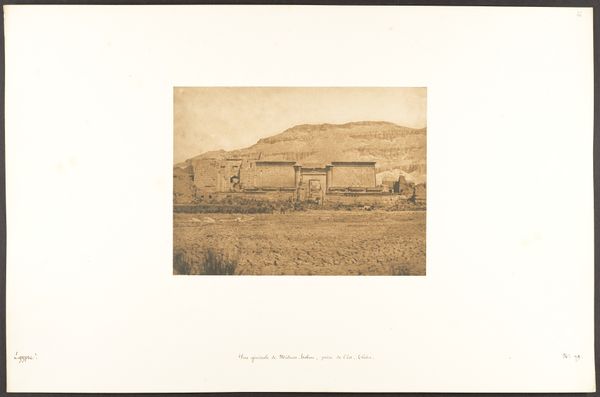
Pagina 107 van fotoboek van de Algemeene Vereeniging van Rubberplanters ter Oostkust van Sumatra (A.V.R.O.S.) c. 1924 - 1925
0:00
0:00
photography, gelatin-silver-print
#
landscape
#
photography
#
orientalism
#
gelatin-silver-print
#
realism
Dimensions: height 240 mm, width 310 mm
Copyright: Rijks Museum: Open Domain
Curator: Let's consider "Page 107 from the Photo Album of the General Association of Rubber Planters on the East Coast of Sumatra," by J.W. Meyster, likely created between 1924 and 1925. Editor: My initial impression is one of stark colonial exploitation masked by an idyllic, almost pastoral, scene. The monochrome palette enhances this feeling of subdued violence inherent in the setting. Curator: I agree that the gelatin-silver print medium lends the image a distinct sense of place, a muted realism. Observe how Meyster meticulously composes the figures against the rubber plantation backdrop. There's a definite intention to portray an ordered landscape. Editor: But that order is a colonial imposition, is it not? Note the indigenous workers clustered around what appears to be the harvested goods. The water buffalo serves as a visual anchor, symbolizing perhaps the labor central to this colonial enterprise. Curator: The formal qualities of the image cannot be dismissed. The light, diffused yet consistent, illuminates the scene, bringing out the texture of the foliage and the distinct shapes of the workers. The balance in the arrangement of subjects creates an almost perfect visual harmony. Editor: Visual harmony at what cost? These people, likely forced to labor, are positioned as elements in a tableau designed to promote the success of the AVROS rubber plantation. This work acts as a propagandistic piece justifying colonial extraction. The artist intentionally frames this brutal relationship. Curator: While I see the propagandistic aspect, I maintain there is artistry in the depiction, specifically within Meyster's ability to balance documentary and aesthetic intentions. He doesn't merely record; he composes, creating structure and visual interest, don't you think? Editor: I think it is impossible to divorce that aesthetic choice from the exploitative realities inherent within this context, and thus these choices perpetuate and glorify inequality. In this so-called “Orientalist” style, an artificial balance is forged, justifying imperial ambitions and concealing systemic injustice behind aesthetic beauty. Curator: An astute observation. Editor: Indeed, a sobering example of the complicated relationships between documentary, art, and power.
Comments
No comments
Be the first to comment and join the conversation on the ultimate creative platform.
